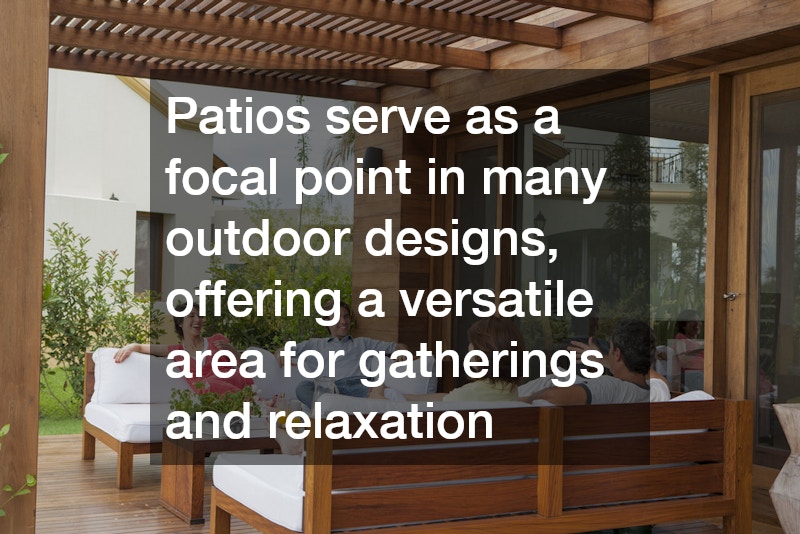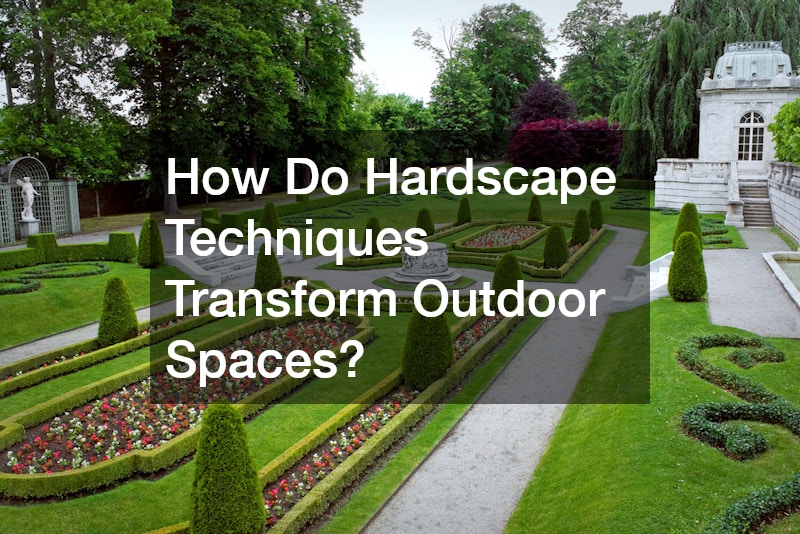Hardscaping refers to the non-living elements of landscape architecture, which can have a profound impact on the aesthetics and functionality of outdoor spaces. By integrating hardscape techniques into landscape designs, homeowners and designers are able to create spaces that are not only visually appealing but also highly functional. These structured elements can define spaces, guide movement, and reduce maintenance, ultimately enhancing the overall outdoor experience.
The significance of hardscaping lies in its ability to complement natural landscapes while adding structure and formality. Unlike softscaping, which involves plants and organic materials, hardscaping uses durable materials like stone, concrete, and wood. This makes it possible to craft spaces that withstand weather conditions and time, providing a long-lasting investment in the beauty and usability of outdoor areas.
Moreover, hardscape techniques play a crucial role in increasing the value of a property. Well-designed outdoor spaces are often seen as extensions of the living area, offering additional space for recreation, entertainment, or relaxation. As a result, investing in hardscape techniques can significantly boost curb appeal and property value, making it an essential consideration for landscape design.
What Are the Key Hardscape Elements for Enhancing Outdoor Aesthetics?
Patios serve as a focal point in many outdoor designs, offering a versatile area for gatherings and relaxation. They can be crafted from various materials such as pavers, bricks, or natural stone, each lending a unique aesthetic to complement the surrounding landscape. A well-designed patio not only enhances the visual appeal but also increases the functionality of the space, providing a seamless transition from indoor to outdoor living.
Walkways play an integral role in guiding the flow of movement throughout outdoor spaces. By connecting different areas, walkways ensure easy access and can emphasize the beauty of the garden or yard. Materials like cobblestone, gravel, or flagstone can be used to create inviting paths that blend harmoniously with the environment. A thoughtfully designed walkway can draw attention to specific landscape features or guide visitors through a curated outdoor journey.
Retaining walls and water features add another dimension of beauty and sound to outdoor spaces. Retaining walls help manage soil and create level areas on slopes, enabling the addition of more functional spaces. They can be constructed from materials like stone or concrete blocks to enhance the architectural appeal. Water features, such as fountains or ponds, introduce soothing sounds and can serve as a stunning centerpiece, attracting wildlife and providing a sense of tranquility.
How Do Hardscape Techniques Improve Functionality and Usability?
One of the greatest advantages of hardscape techniques is their ability to create defined areas for specific activities. By using elements like pergolas, fire pits, and seating walls, outdoor spaces can be tailored to suit different needs such as dining, lounging, or entertaining. This clear definition not only makes the space more organized but also enhances its usability by providing purpose-driven areas that can accommodate various purposes.
Improved access and mobility within outdoor spaces are crucial for maximizing their use. Hardscaping enhances connectivity, allowing for smooth and easy transitions between different sections of a garden or yard. Features like steps, ramps, and even outdoor lighting contribute to safe navigation, enabling people of all abilities to enjoy the space comfortably and confidently.
Furthermore, hardscaping can significantly reduce the maintenance efforts required for outdoor spaces. Constructed from durable materials, hardscape elements can endure the elements with minimal upkeep. For instance, a well-installed patio requires less maintenance than a lawn, which needs regular mowing and watering. This reduction in ongoing care enables homeowners to spend more time enjoying their outdoor spaces rather than maintaining them.
What Is the Environmental Impact of Hardscaping?
Understanding the environmental impact of hardscaping is essential when planning outdoor spaces. Sustainable materials, such as locally sourced stone or recycled concrete, can minimize the ecological footprint associated with construction. By choosing eco-friendly materials, designers can reduce the impact on natural resources and contribute to environmental conservation.
Drainage solutions play a pivotal role in hardscape techniques by managing water flow and preventing erosion. Effective drainage can be achieved through permeable pavers, which allow water to pass through and infiltrate the soil, reducing runoff and promoting groundwater recharge. This can help mitigate the risk of flooding and protect the environment from water-related issues.
When thoughtfully planned, hardscaping can support environmental conservation by reducing water usage and protecting ecosystems. For example, xeriscaping combines hardscape elements with drought-tolerant plants, minimizing the need for irrigation. These practices can lead to sustainable landscapes that require fewer resources while maintaining their aesthetic appeal and ecological balance.
Hardscape techniques offer transformative benefits that enhance both the aesthetic appeal and functional capabilities of outdoor spaces. From patios and walkways that boost visual interest to retaining walls and water features that add depth and beauty, these elements are essential components of modern landscape design. By clearly defining areas, improving accessibility, and reducing maintenance, hardscaping ensures that outdoor spaces can be enjoyed to their fullest potential.
Moreover, integrating sustainable practices into hardscape designs is becoming increasingly important, as environmental conservation remains a key concern. Utilizing sustainable materials and effective drainage solutions not only reduces the ecological footprint but also promotes the health of surrounding ecosystems. This ensures that outdoor spaces are not only visually pleasing but also environmentally responsible.
Overall, incorporating hardscaping into landscape architecture creates durable, functional, and aesthetically appealing spaces that complement natural elements, enhance property value, and provide lasting enjoyment. As outdoor living continues to grow in popularity, the strategic use of hardscape techniques will remain a vital aspect of creating memorable and sustainable outdoor environments.




